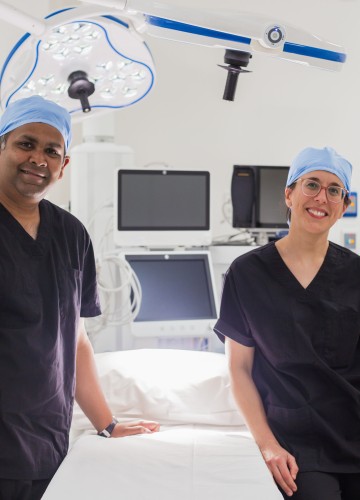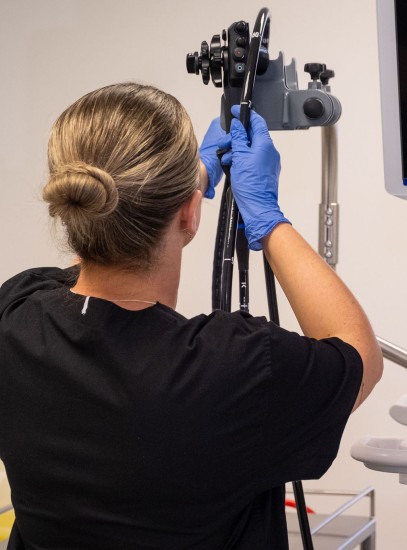Home / Procedures & Investigations / Laparoscopic Cholecystectomy
Laparoscopic Cholecystectomy
Laparoscopic cholecystectomy, is a common laparoscopic (key hole) procedure to remove the gallbladder. The gallbladder is a small organ located below the liver that stores bile.

A cholecystectomy is typically recommended to:
treat gallstones that cause pain, inflammation, or infection
to manage gallbladder disease, such as cholecystitis (inflammation) or biliary colic
to prevent complications such as blocked bile ducts or pancreatitis

What is Involved in Laparoscopic Cholecystectomy?
Laparoscopic cholecystectomy is a keyhole (laparoscopic) operation typically lasting about 1 hour.
It may include an intraoperative cholangiogram, an x-ray study to check the bile duct. It is performed under general anaesthesia (you will be asleep).
Small incisions are made: one near the belly button (umbilicus) and three other small cuts on the abdomen. Gas (carbon dioxide) flows into the abdomen so that the surgeon has a good view.
A camera and surgical instruments are inserted. The small duct and artery related to the gallbladder are clipped and divided, and the gallbladder removed.
Before & After Your Surgery
What to know before your procedure and how to support your recovery - simple steps to help you feel prepared and confident.
Your surgeon will be happy to answer your questions and discuss your concerns to ensure that you understand the procedure, recovery, and what to expect.





